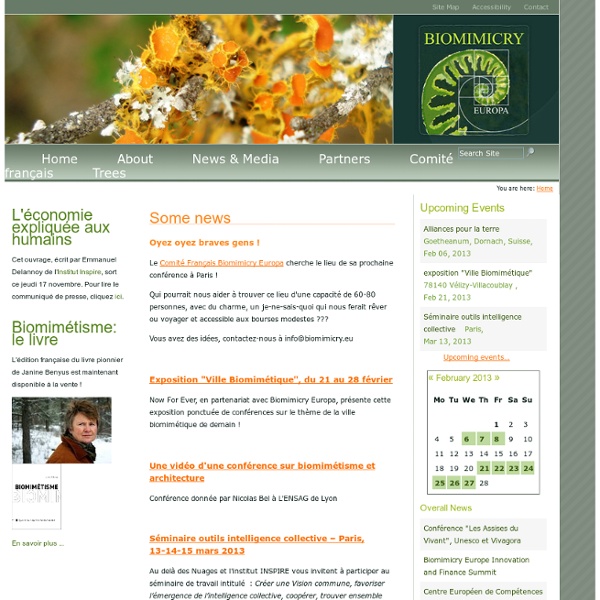



Brooks + Scarpa Architects - Santa Monica - Architects | california-architects.com Brooks + Scarpa has redefined the role of the architect and results in some of the most remarkable and exploratory design today. We do so by looking, questioning and reworking the very process of design and building. Each project appears as an opportunity to rethink the way things normally get done; to redefine and identify latent potential that exists inmaterials, form, construction and even financing—to, as Lawrence Scarpa says, make the “ordinary extraordinary.” Over the last ten years, BROOKS + SCARPA has received more than 50 major design awards, including the 2010 AIA National Architecture Firm Award, 18 national AIA Honor Awards for architecture and interior architecture, 2005 Record Houses, 2003 Record Interiors, 2003 Rudy Bruner Prize, four AIA COTE “Top Ten Green Building” Awards and was a finalist for the 2003 World Habitat Award, one of ten firms selected worldwide.
Biomimicry Education Network A Daily Dose of Architecture Eco | Interface | Mind the Gap socks-studio MATERIALECOLOGY: Neri Oxman Réglementation thermique : Actualités Neri Oxman Designer Neri Oxman is the Sony Corporation Career Development and assistant professor of Media Arts and Sciences at the MIT Media Lab, where she founded and directs the Mediated Matter research group. Her group explores how digital design and fabrication technologies mediate between matter and environment to radically transform the design and construction of objects, buildings, and systems. Oxman coined the term “material ecology” to describe the study and design of products and processes integrating environmentally aware, computational, form-generation processes and digital fabrication. Her goal is to enhance the relationship between the built and the natural environments by employing design principles inspired by nature, and implementing them in the invention of novel digital design technologies. Oxman was named to ICON's list of the 20 most influential architects to shape our future (2009), and was selected as one of the “100 most creative people” by Fast Company (2009).
RT neuf 2012 : Présentation Les orientations retenues à l'issue des tables rondes du Grenelle de l'environnement à l'automne 2007 ont amorcé la mutation écologique de la France. La mise en œuvre des comités opérationnels a permis de définir les voies, moyens et conditions requis pour une entrée en vigueur des conclusions du Grenelle notamment le renforcement de la réglementation thermique dès 2012 pour tous les types de bâtiments qui y sont soumis. L'ensemble de ce travail sur l'orientation énergétique de la France s'est traduit concrètement par le vote des lois Grenelle I et II. Ces deux lois servent désormais de socle pour l'élaboration de l'ensemble des mesures nécessaire à la mise en place de la politique énergétique de la France, et notamment les principes de la RT 2012. La RT 2012 : un engagement fort du Grenelle de l’environnement Afin de répondre à ces différents objectifs, la DHUP a engagé l'élaboration de la RT 2012 depuis l'été 2008. La RT 2012 est applicable à tous les permis de construire :
Great Lakes Biomimicry | Innovation Inspired by Nature La réglementation technique de la construction dans les DOM 6 janvier 2010 (mis à jour le 28 janvier 2013) - Ville durable, aménagement et construction La RTAA DOM : 3 volets réglementaires spécifiques aux DOM Dans ce contexte, les textes réglementaires relatifs aux caractéristiques thermiques, énergétiques, acoustiques et d’aération des bâtiments d’habitation neufs dans les DOM ont été adaptés en application de l’article L. 161-1 du code de la construction et de l’habitation. Le décret n° 2009-424 et ses 3 arrêtés d’application du 17 avril 2009 définissent ces dispositions spécifiques dans les départements de Guadeloupe, Guyane, Martinique et La Réunion, qui seront applicables aux demandes de permis de construire et aux déclarations préalables déposés à compter du 1er mai 2010. C’est la RTAA DOM, un ensemble de 3 nouvelles réglementations spécifiques pour les bâtiments d’habitation neufs, en thermique, en acoustique et en aération. Ces textes spécifiques aux DOM se fondent sur les principes suivants : En voici les points-clés. Textes de référence